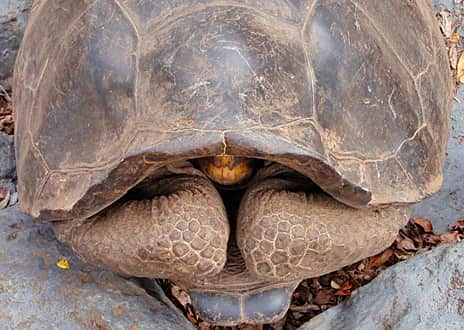Lonesome George May Not Have Been the Last of His Species to Die
OutdoorHub Contributors 11.16.12

When the giant tortoise Lonesome George died this summer [Outdoor Hub story here – Editor], conservationists from around the world mourned the extinction his species. However, a genetic analysis by Yale University researchers of tortoises living in a remote area of a Galapagos Island suggests individuals of the same tortoise species may still be alive — perhaps ancestors of tortoises thrown overboard by 19th century sailors.
The study was published in the journal Biological Conservation.
On the remote northern tip of Isabella Island, the Yale team collected DNA from more than 1,600 giant tortoises and discovered that 17 were ancestors of the species Chelonoidis abingdoni, native to Pinta Island of which Lonesome George was the last known survivor. The 17 tortoises are hybrids, but evidence suggested a few might be the offspring of a purebred C. abingdoni parent. Five of these tortoises are juveniles, which suggested to researchers that purebred individuals of the species may still live on the rocky cliffs of Isabella in an area called Volcano Wolf.
“Our goal is to go back this spring to look for surviving individuals of this species and to collect hybrids,” said Adalgisa “Gisella” Caccone, senior research scientist in the Department of Ecology and Evolutionary Biology and senior author on the study. “We hope that with a selective breeding program, we can reintroduce this tortoise species to its native home.”
Volcano Wolf where DNA samples were collected is 37 miles away from Pinta Island. Scientists do not believe ocean currents could have carried giant tortoises to Isabella Island. They note that Volcano Wolf is next to Banks Bay, where in the 19th century sailors of naval and whaling vessels discarded giant tortoises collected from other islands when they were no longer needed for food. A previous genetic analysis of these same tortoises had discovered tortoises with genetic ancestry of C. elephantopus, a species from Floreana Island that had been hunted to extinction in its home range. The members of these marooned tortoise species then mated with indigenous tortoises, researchers suggest.
Yale and the Galapagos Conservancy hope to collect hybrids and any surviving members of both Pinta and Floreana Island species and begin a captive breeding program that would restore both species. The Conservancy, Galapagos National Park, National Geographic Society, The Eppley foundation, The Paul and Bay Foundation and the Turtle Conservation Fund supported the research.
“These giant tortoises are of crucial importance to the ecosystems of the Galapagos Islands, and the reintroduction of these species will help preserve their evolutionary legacy,” said Danielle Edwards, postdoctoral research associate at Yale and lead author on the study.
Other Yale authors of the study were Edgar Benavides, Ryan C. Garrick, Kristin B. Dion, and Chaz Hyseni.

